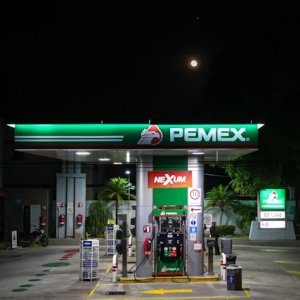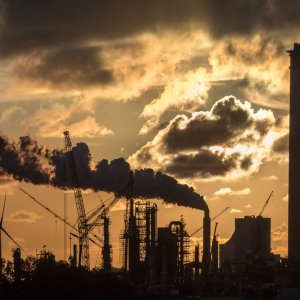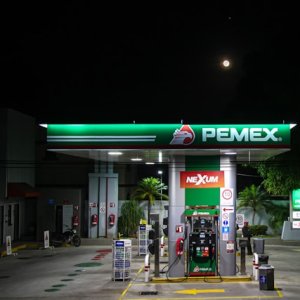Causes and Effects of Nitrogen Contamination in Gas Streams

STORY INLINE POST
Natural gas is a mixture of light hydrocarbons in a gaseous state, composed of methane and ethane, and to a lesser extent, propane, butane, and heavier hydrocarbons. If the content of hydrocarbons is of a higher order than methane is high, it is called rich gas; otherwise, it is known as dry gas. The main impurities that the mixture can contain are water vapor, carbon dioxide, nitrogen, hydrogen, and sulfide, among others. It is a cleaner combustion fuel than others because it contains less carbon monoxide, carbon dioxide, nitrogen oxide, and sulfur; therefore, engines and burners that use gas are easy to clean and maintain. It is a fossil fuel, odorless and colorless.
The natural gas stream contains impurities or pollutants such as nitrogen, hydrogen, carbon dioxide, and hydrogen sulfide. Carbon dioxide and hydrogen sulfide come from acids or acidic solutions in the presence of the water contained in the gas. These substances are very undesirable and must be removed from natural gas. On the other hand, hydrogen and nitrogen are inert gases that will only affect the calorific value of the gas and, logically, the cost of transportation.
The process of conditioning natural gas from its production in the well to its industrial use requires a delicate and risky process. It starts with dehydration — removing the contained water, then sweetening to reduce or eliminate sulfur content, nitrogen removal, dew point adjustments, and, eventually, paraffin removal.
The nitrogen content in gas is currently a critical issue for Mexico because its continuous use for an extended period has caused contamination of the natural gas from important reservoirs, mainly in PEMEX marine regions. An analysis conducted by the Energy Regulatory Commission (CNH) established that, since 2000, the volumes of gas injected into the reservoirs were complemented with nitrogen to maintain the amounts required for the reservoirs to reduce the accelerated pressure drop caused by incremental oil extraction. However, the results obtained in the marine region by using nitrogen as a mechanism to maintain and improve the reservoir energy encouraged PEMEX’s technical management to extend this process to the Bellota-Jujo and Samaria Luna assets in the southern region, causing contamination problems in the gas processing plants existing in this region, converting an isolated regional problem into a corporate risk.
Now, nitrogen removal has become a critical process. There is a need to solve its impact on oil and gas production. It must separate nitrogen associated with the natural gas stream.Removing nitrogen from the gas stream is critical because it affects its caloric power, increases compression and transport costs, and the emissions of pollutants in closed places such as plants can cause serious harm to people. But PEMEX can convert this problem into an opportunity by understanding its nature and benefits, specifically as a vital component of ammonia, one of the most in-demand fertilizer products.
Nitrogen molecules constitute 78 percent of the volume of the Earth's atmosphere. It is an element for life and can be found in limited quantity in organic form in plants, in living or dead organisms, and in mineral form (ammonia). Nitrogen is a non-flammable gas and does not sustain combustion, and it is slightly lighter than air and soluble in water. It forms nitric oxide and nitrogen dioxide with oxygen, ammonia with hydrogen, and nitrogen sulfide with sulfur. It also can be used as an inert gas.
Nitrogen compounds are formed through biological processes and through a chemical process, where compounds are formed at high or moderate temperatures with the help of catalysts. At elevated temperatures, nitrogen can combine with active metals, such as lithium, magnesium, and titanium, to form nitrides.
Several technologies have been used in the oil industry to separate the nitrogen content from the gas mixture, such as cryogenic treatments, adsorption, and membrane separation. Cryogenic distillation is the most common and economical method and provides higher performance. After cryogenic distillation, Pressure Change Adsorption (PSA) is the most viable process using Nitrogen Removal Units (NRU), which can be easily adapted to process gas mixtures of different nitrogen content, without modifications to the equipment, only by adjusting adsorption cycle times. Adsorption units can be mounted on skids, providing easy mobility between gas processing sites on land and offshore. In addition, more than one component of the gas can be removed by this type of process. Both technologies have been implemented with excellent results in cleaning gas-contaminated streams worldwide. The NRU plant size may be customized to the conditions existing in the field.
Presently, advances in gas treatment processes are being promoted because of emissions into the atmosphere, and energy inefficiencies in gas processing, to the degree of pollution; however, gas contamination with nitrogen has become one of the most critical issues in Mexico to promote gas treatment processes. Hence, PEMEX must select the most appropriate technologies to solve the issue.
The challenges are to develop technologies with lower energy consumption, materials that have improved adsorption and selectivity capabilities toward the target compounds, and that are flexible in their operation. These are critical issues that already impact the delivery of gas volumes to the national transporting and storage systems because the nitrogen content affects the quality of the well's volume of gas transported, and the local regulators will not accept it for the damage caused to the gas streams. Therefore, those contaminated gas volumes must be flared or burned, with its environmental implications and impact on production, if they must be closed due to the lack of options for cleaning and storage. This situation is a challenge for PEMEX, and an opportunity for the country.
























